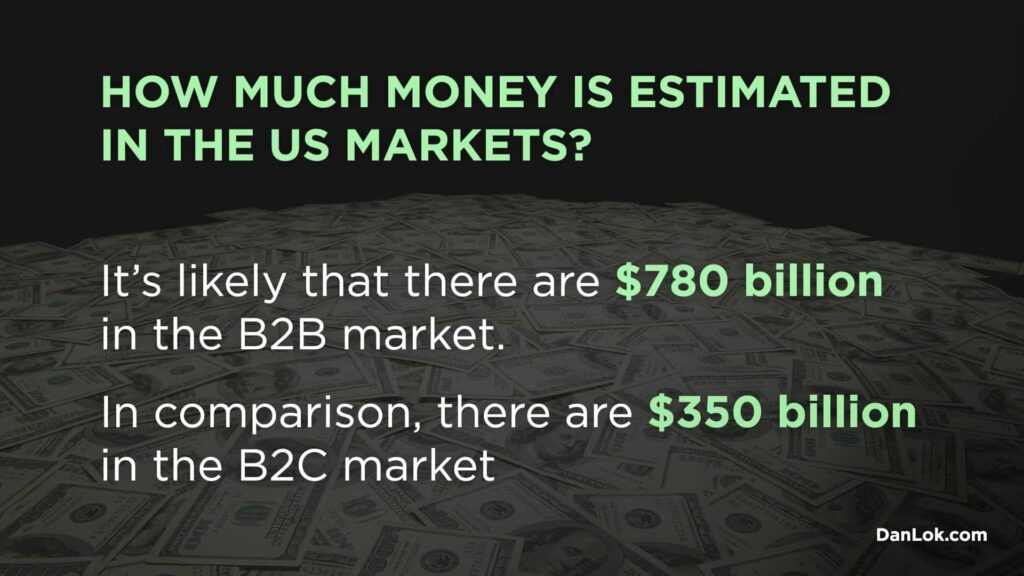A lot of people think most highest-paid coaches are so-called fake “gurus.”
Why is that?
It could be because some of them seem to have success almost overnight. Or it could be because there isn’t enough proof online for the audience to believe.
Either way, there must be something they’re doing right that most people aren’t to become the top 1%.
And the only way for people to believe in that type of success is if coaches can generate trust.
You see, trust is the ultimate asset, but it takes a long time to develop.
If unheard-of coaches disrupt the online world, most people are going to think they’re a scam. That’s because there hasn’t been enough trust for people to believe in them.
People want to know who you are and how you got your success. The best way to do that is to add value over time. You can share your wisdom, and if that changes at least one person’s life, people will start to develop more trust.
So if you’re a rising coach who’d like to become one of the highest-paid coaches, you’ll need to follow what they’re doing now.
When you start to act more like the 1%, you’ll become them. All it takes is for you to keep adding value to attract more clients. And the more trust you build with clients, the more revenue you’ll have.
The Old You Must Die
Before you can start becoming the person you hope to be, the old you must die first.
If you can’t accept that, then it’ll be harder for you to move forward. This might not be something that’s easy to do, but it’s necessary.
Successful people are willing to do what makes them uncomfortable in the interest of growth. - Bob Proctor Click To TweetIt’s possible for anyone to achieve the top 1%. If you ask any of the highest-paid coaches, most of them will tell you they did not come from a fortunate background.
If you ask the young Dan Lok, he’s going to tell you that he’s far from being rich. But because he left his old identity, he was able to create a new one.
So for you to bridge that gap and become the next addition to the top 1%, you’ll need to see how those before you succeeded.
The fastest way to wealth is to learn from the wealth. Wouldn’t you agree? They can show you what they’ve done, so you can follow their footsteps.
And until you can master in skills, then you’ll start to see results. So if you still don’t have clarity in what those skills are yet, you’ll need to find a mentor to help you.
Getting Started With Coaching
If you want to earn like the highest-paid coaches, you’ll have to cut out all the distractions in your life.
That means if you still plan to work for someone else, it’s going to slow down your path to being the top 1%. So your goal should be to branch out on your own and to start a business if you haven’t already.
But don’t ditch your steady paycheck if you can’t survive to pay the bills. You’ll need to work on your business on the side first, and when that picks up, you can then fire your boss.

When you have your own business, you’ll have full ownership and more earning potential. That’ll be a great source of wealth to have when you own the assets.
And if you don’t know what business to start, it all comes down to your skills. What is that one thing you’re good at?
Once you become a master of your craft, a lot of people will look up to you as an industry leader. But first, you need to be able to show it in your skills.
Being a coach isn’t going to be easy. You can expect to take a lot of risks, go against the norm, and make tons of mistakes. But once you get past through these challenges, your success will reward you.
Become A Bookworm
If you weren’t a reader before, now is the best time to get into the habit of reading.
Author James Altucher once said, “Only read books you enjoy, that makes you happy to be human.”
And believe it or not, reading books is life-changing. It can teach you a lot more than what you get out of school.
That’s how Dan Lok was able to go from being a broke kid to finding his first mentor. He started reading thousands of self-help books, and it opened his mind to a whole new world of marketing.
And even reading ads too. He kept all the ads he received in the mail to study copywriting. That led him to his first high-income skill and 6-figure income.
You can think of it like this – each book contains someone’s lifetime of secrets. The more you read, the more money you’ll make.
It’s true. According to Inc.com, reading taught Elon Musk how to build a rocket ship. It also showed Tony Robbins how to build a better life. And now he’s teaching others how to do it as well.

So if you’d like to know what the highest-paid coaches are doing to earn more, they read every single day.
Imagine for every page you read, you get a raise. How many pages would you read every day?
When you read a lot, you’ll start to find it easier to come up with ideas and innovate. You’ll begin to feel more knowledgeable and see things from a different perspective. It’s a powerful feeling when you know something that few people won’t understand.
You will also attract more success when you learn a lot. That’s because it’ll be easy for you to share things people have never noticed before. They will start to see how valuable you are.
Make Money Work In Your Favor
The top 1% knows how money works.
That’s why it’s easy for the rich to become richer. And to crack the code on how to be like the highest-paid coaches, you’ll need to learn how money works too.
Money may seem complicated to understand. In fact, 33% of American adults have $0 saved for retirement. Most people will spend their whole lives working hard and never knowing how money works.
So if you take the time to learn about money-making strategies now, the payoff in the future will thank you.
This all goes back to reading. When you read more about money, you’ll attract more of it.
And what most people are doing wrong right now is being scared of learning how money works. They either spend it all or save it all – both of these are neither the solutions to a good way of living.
What the top 1% is doing is they’re careful with how they manage money. They have to balance cash flow early on to avoid being broke.
Self-made millionaire Grant Cardone said, “I didn’t buy my first luxury watch or car until my businesses and investments were producing multiple secure flows of income.”
Even when they start to see success, they won’t blow up all that money. That wouldn’t be a smart choice for anyone to make.
When you gain a dollar, you have to think to yourself: “How can I use this to make more?”
Only that mindset will take you closer to your goals.
Smart People Don’t Work Hard – They Leverage Instead
Leveraging could be the smartest decision you’ll ever make for your business.
Think about it.
There’s only one of you. Everyone has the same 24 hours each day. It would be impossible for you to run everything in your business. And it wouldn’t be the best idea either.
You see, your time is valuable. Since you’re the business owner, you should focus on innovation and moving the needle.
If there are tasks that someone else can help you do – hire them to do it. And if there’s something you don’t know how to do, find someone else to do it instead of learning it from scratch.

For example, Dan Lok hires people to help him create his YouTube videos. That is because Dan, himself, doesn’t have the time to edit his own videos. Also, he’s not a video editor, so hiring professionals would be a better choice if he wants to create results.
You can also leverage money.
Don’t be afraid to use other people’s money when you need it. If your great ideas need funding to help turn them into reality, leverage other people’s money to make it happen.
It’s better to take action now than to wait until you’re ready. Because when you wait, the opportunity might not be the same anymore.
But to get someone else to fund your ideas, you’ll have to be confident that your ideas will work in the marketplace. It has to sound promising.
Creating More Wealth With Wealth
Once you’ve made some success, you can then move on to creating many income streams.
But keep in mind, you can only do this after you’ve mastered your skill first. Otherwise, you could get into financial risks.
You do not want to create a new income stream if you’re still broke, in debt, or have too many bills to keep up with.
The majority of highest-paid coaches have many income streams to create more wealth.
Tom Corley, the author of Rich Habits, says 65% of self-made millionaires had 3 streams of income.
If you’re like any of these millionaires, you would know to keep learning. Once you focus on building that knowledge, your wealth will follow.
This includes not spending your money on whatever you want. You have to develop financial intelligence.
For example, every dollar you own has the potential to develop more. You can multiply your money by investing, not by saving nor spending. That’s how you can make money work for you.
Work Hard Now So You Won’t Later
Here’s the sad reality – most people are waiting until they’re 65 to retire and rely on government funds.
They work hard all their lives, and by the time they get older, they’re too old to travel. They can’t do the things they could’ve done at a younger age.

But what if you can start working harder now to enjoy life sooner?
These people might not have been aware of other paths to take other than the traditional route. You graduate school, get a good job, pay bills, and then retire.
This route is fine, but it doesn’t always end up well. You could still be years in debt because of student loans. And when you’re in debt, it makes it a lot harder for you to enjoy your hard-earned money.
So, what do you do?
Highest-paid coaches had to sacrifice something to get to where they’re at today. Instead of partying on the weekends, they build their network. And instead of watching TV, they read books.
This is what Dan Lok did in his early life. He did not focus on hanging out with friends, but he focused on sharpening his skills instead. And with that, he was able to retire at an early age of 27.
Now everything he does is easier to achieve. Since he’s a master of his skills, he can always rely on them to make money.
Let’s say he loses everything he has today. He can make it all back in a short amount of time. But if he hadn’t mastered his skill set yet, he’d still struggle to make success.
The main point is, the 1% do what’s different from most people. And when you’re a business owner, you’re going to get a lot of people discouraging you from your dreams. This is a normal part of the process.
Do The Complete Opposite
You don’t have to follow what your circle of friends is doing.
In fact, you’ll find more success if you do the complete opposite. So don’t let peer pressure or anything else stop you from your tracks to success.
Only you know what’s right for you. Not even your parents or the people closest to you know. And it would be a sad life to listen to what everyone else does instead of what you want.
With that said, you’ll need to train yourself to keep making sacrifices. This could mean giving up all the things you want right now to have a better tomorrow.
It’s going to take a lot of discipline. If you give in to everything you want today, you’ll have to end up working harder for the things you want in the future.
For example, if you spend all your savings on your dream car now, you’ll continue to work hard longer. Why not work hard now and enjoy the reward later?
It will get easier along the way. Because once you start making sacrifices, you’ll start to see results. Then you’ll want to keep doing whatever it takes to move forward to bigger goals.
So the more you can resist now, the sooner your life will be easier. Wouldn’t you want to retire earlier too? Until then, you’ll have the freedom to do whatever you want whenever you like. But first, you have to earn it.
Your Shortcut To Becoming One Of The Highest-Paid Coaches
Becoming the top 1% isn’t as hard as you might think.
Once you find out what the highest-paid coaches are doing, you’ll want to follow in their footsteps. And when you do, you’ll see how easy it can be to get closer to your goals and build the coaching business of your dreams.
Over the last 2 decades, Dan Lok has worked with thousands of Coaches and Consultants. Some of them had lead generation problems, some had sales issues, and some had offer problems. We don’t know exactly what issues you’re facing in your business.
To help you on this journey, Dan Lok has compressed decades of tips and strategies to address the problems that Coaches and Consultants faced into a free resource. It’s called “The $100 Million High Ticket Coaching and Consulting CheatSheet”.
This valuable cheatsheet is filled with proven strategies and techniques that have helped Dan Lok and his clients generate massive revenue from coaching and consulting. You’ll gain access to practical insights on how to attract high-paying clients, increase your revenue, and grow your coaching business. You’ll discover how to position yourself as an expert in your field, how to communicate your value to potential clients, and how to create high-ticket offers that your clients will love.
Download “The $100 Million High Ticket Coaching and Consulting CheatSheet” for free today and take the first step towards becoming one of the highest-paid coaches in the industry.































